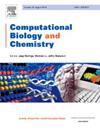利用各种分类模型检测癌症:利用 HMM 提取核苷酸模式的综合特征分析
IF 2.6
4区 生物学
Q2 BIOLOGY
引用次数: 0
摘要
本研究提出了一种新颖的特征提取方法,利用隐马尔可夫模型(HMM)识别基因组序列中的复杂模式。在这项研究中,我们使用 HMM 来识别恶性和非恶性细胞特有的基因核苷酸模式。DNA 和 RNA 这两种重要的基因成分参与了许多影响健康细胞和恶性细胞的生物过程。早期识别病人对成功诊断和治疗癌症至关重要。不同的核苷酸模式表示不同的细胞反应,这对了解癌症和相关疾病的分子原因非常重要。我们详细研究了恶性和非恶性细胞中蛋白质序列(CDS)和非蛋白质序列(NCDS)变化的整个原始核苷酸序列中的核苷酸模式。通过使用提议的 HMM 进行特征提取和选择,实现了核苷酸预测,同时减少了计算费用。这项工作中用于癌症检测的分类模型包括梯度提升决策树(GBDT)、随机森林(RF)、决策树(DT)和带内核的支持向量机(SVM)。通过全面的案例研究,验证了所建议的分类模型的准确性和 10 倍交叉验证。结果表明,DT 和集合学习技术能明显区分恶性和非恶性 DNA 序列。具有合适内核的 SVM 能显著提高癌症检测的准确性。将减少特征的方法与基于隐马尔可夫模型的核苷酸模式分类器相结合,可提高性能并确保可靠的癌症检测。本文章由计算机程序翻译,如有差异,请以英文原文为准。
Cancer detection with various classification models: A comprehensive feature analysis using HMM to extract a nucleotide pattern
This work presents a novel feature extraction method for identifying complex patterns in genomic sequences by employing the Hidden Markov Model (HMM). In this study, we use HMM to identify gene nucleotide patterns that are specific to malignant and non-malignant cells. Crucial genetic components DNA and RNA are involved in many biological processes that impact both healthy and malignant cells. Early patient identification is essential to successful cancer diagnosis and therapy. Varying nucleotide patterns indicate different cellular responses, which are important to understanding the molecular causes of cancer and associated disorders. We present a detailed study of nucleotide patterns in whole raw nucleotide sequences with variations in both protein sequence (CDS) and non-protein sequence (NCDS) in both malignant and non-malignant cells. Nucleotide prediction has been achieved while computational expenses are reduced by using the proposed HMM for feature extraction and selection. The classification models implemented in this work for cancer detection are Gradient-Boosted Decision Trees (GBDT), Random Forests (RF), Decision Trees (DT), and Support Vector Machines (SVM) with kernels. The suggested classification model's accuracy and 10-fold cross-validation have been validated via comprehensive case studies. The results reveal that DT and ensemble learning techniques significantly differentiate between malignant and non-malignant DNA sequences. SVM with suitable kernels improves cancer detection accuracy significantly. Combining feature reduction approaches with nucleotide pattern classifiers based on Hidden Markov models improves performance and ensures reliable cancer detection.
求助全文
通过发布文献求助,成功后即可免费获取论文全文。
去求助
来源期刊

Computational Biology and Chemistry
生物-计算机:跨学科应用
CiteScore
6.10
自引率
3.20%
发文量
142
审稿时长
24 days
期刊介绍:
Computational Biology and Chemistry publishes original research papers and review articles in all areas of computational life sciences. High quality research contributions with a major computational component in the areas of nucleic acid and protein sequence research, molecular evolution, molecular genetics (functional genomics and proteomics), theory and practice of either biology-specific or chemical-biology-specific modeling, and structural biology of nucleic acids and proteins are particularly welcome. Exceptionally high quality research work in bioinformatics, systems biology, ecology, computational pharmacology, metabolism, biomedical engineering, epidemiology, and statistical genetics will also be considered.
Given their inherent uncertainty, protein modeling and molecular docking studies should be thoroughly validated. In the absence of experimental results for validation, the use of molecular dynamics simulations along with detailed free energy calculations, for example, should be used as complementary techniques to support the major conclusions. Submissions of premature modeling exercises without additional biological insights will not be considered.
Review articles will generally be commissioned by the editors and should not be submitted to the journal without explicit invitation. However prospective authors are welcome to send a brief (one to three pages) synopsis, which will be evaluated by the editors.
 求助内容:
求助内容: 应助结果提醒方式:
应助结果提醒方式:


